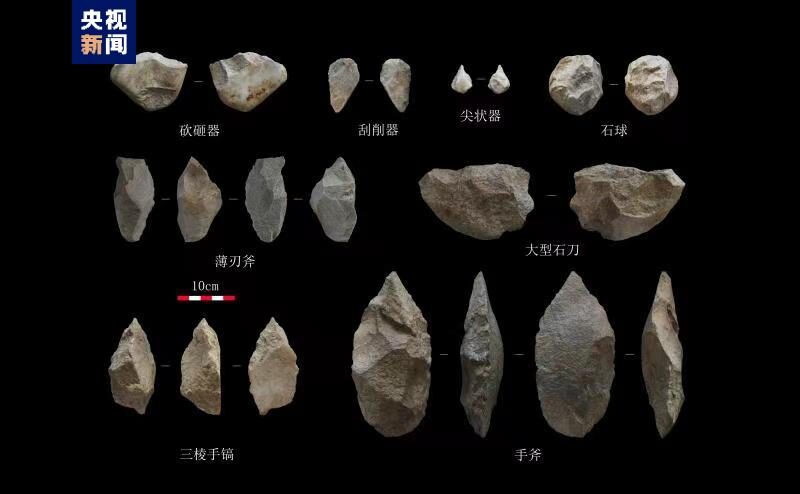
A series of excavations carried out between 2019 and 2023 at various locations in the Yellow River Basin - considered the birthplace of Chinese civilisation - have yielded stone tools and other artefacts that date from between 1.1 million to 10,000 years ago, according to scientists.
"The uninterrupted history of hominin development in our country can be dated back over a million years," said Luo Wenli, director of the Shaanxi Provincial Cultural Relics Bureau, in a report posted online by People's Daily. Hominins consist of all modern and extinct humans and our immediate ancestors.
Comment:
The artefacts uncovered include hand axes, choppers and other tools, likely used for hunting, among activities. Scientific analysis of the relics suggests there was a continuous development of prehistoric culture in the region over a long period, according to Luo.
Among the excavations, the deepest continuous cultural deposit measured 24 metres (78 feet). Tens of thousands of artefacts have been unearthed at more than 150 sites.
"They offer a powerful piece of evidence," Luo said.
The traditional theory of "out of Africa" suggests that modern humans evolved in Africa and then migrated out of the continent. The idea is that humans arrived in southern China around 60,000 years ago and spread across the region, replacing other hominin populations that they encountered along the way.
However, recent genetic studies indicate this model may be too simplistic, and that there was actually significant interbreeding among different hominin species throughout evolutionary history.
"In the past, important ancient human fossils such as Lantian Man, Dali Man and Huanglong Man have been discovered in Shaanxi. We have basically established a relatively complete evolutionary chain of ancient humans in China over the past million years," Luo said.
The newcomers did not wipe out the locals, according to the new evidence of cultural artefacts. "There was an obvious trait of inheritance and continuity," he added.
Comment: Whether this is accurate remains to be seen, because replacement and integration has happened repeatedly across the planet throughout history: DNA from ancient population in Southern China suggests Native Americans' East Asian roots
Shaanxi's Yeyuan site, for instance, is a prehistoric hominin culture site located in the Nanluo River valley. It contains 36 layers of sediment, the bottom layer being an ancient river floodplain that has stone artefacts dating back to at least 1.1 million years ago, according to the bureau.
At this time, the stone tool technology used by ancient hominins was simple core and flake technology. The tools consisted mainly of simple choppers and scrapers.
From about 780,000 to 250,000 years ago, the crude stone tool technology used by the ancient hominins at the Yeyuan site continued to improve, with newer implements appearing such as single-sided retouched hand axes with more regular shapes eventually being developed.
Then, about 250,000 years ago, activity at the Yeyuan site entered an extended period of prosperity, marked by a widening variety of cultural artefacts. New tools such as well-crafted hand axes, trihedral picks, thin-bladed axes and large stone knives were developed. The latest stone tools at the site were dated to 30,000 years ago.
"These discoveries in Nanluo seem believable," said professor Wei Qi, a retired palaeontologist from the Institute of Vertebrate Palaeontology and Paleoanthropology in Beijing on Tuesday.
"But the dating of the sediments may require more verification."
Discoveries of continuous cultural activities over long periods of time are not unique to China and have been observed at other early hominin sites around the world.
The Olduvai Gorge in Tanzania has seen extensive archaeological and paleontological research since the early 20th century. It has yielded evidence of continuity in cultural activities stretching back more than 2 million years.
Similarly, Europe is home to many sites that have yielded evidence of continuous cultural activities over tens of thousands of years, such as the Atapuerca Mountains in Spain and the Denisova Cave in Russia.



Utter BOLLOCKS.
Academia, guilty as charged.